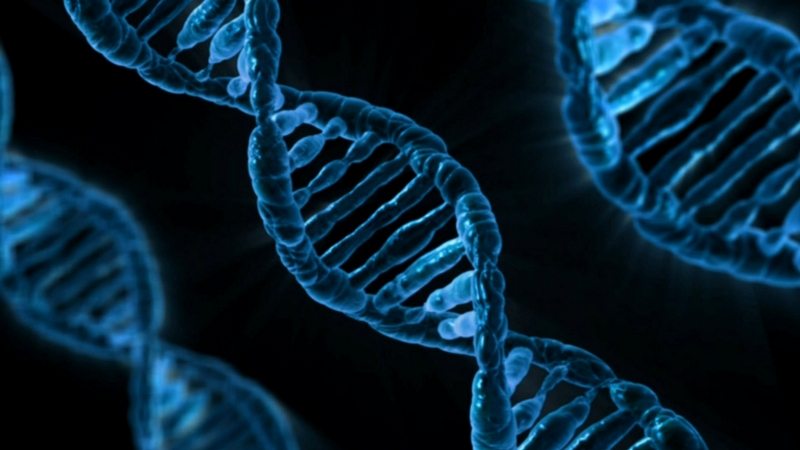DNA
Episode #3 of the course The molecular building blocks of life by Dr. Bill Thomas
Previously, we saw that nucleotides are made up of three smaller molecules: a carbohydrate, a phosphate, and a base. In this lesson, we will see that nucleotides can be assembled into an even larger molecule: DNA, or deoxyribonucleic acid, the blueprint of life.
The Mystery Molecule
Although DNA had been studied extensively since the late 19th century, its structure remained elusive until 1953. Based on the pioneering work of Rosalind Franklin, James Watson and Francis Crick proposed the double helix structure of DNA that we are all familiar with today. The elegant structure of DNA has been described with great precision, but all this structural precision serves a very important purpose, as we shall see.
DNA Functions
Interestingly, DNA is probably the least versatile of the molecular building blocks discussed in this course. Unlike nucleotides, DNA has only one purpose, but it’s a critical one, since a DNA molecule stores vast amounts of genetic information. In fact, every cell of an organism contains enough DNA to store every gene that the organism (say, a human like yourself) will ever need, even though many cells will never need some of those genes. In other words, DNA carries all the information an organism needs to grow, reproduce itself, and carry out the biological processes necessary for life.
But What Is a Gene?
Quite simply, a gene is a blueprint that tells a cell how to build a particular protein. If you recall from Lesson 2, there are four different nucleotides that are used to build DNA (usually denoted as A, C, G, or T). The pattern in which these four nucleotides occur in DNA is different for each gene; in such a way, this four-letter “alphabet” provides the information needed to assemble the protein. Depending on the protein, a gene can be quite long (encompassing thousands of nucleotides) or comparatively short (only a few hundred nucleotides). It takes many thousands of genes to make all the proteins necessary to build and maintain a living organism—even a simple one. All the genes needed by an organism are stored together on one or more molecules of DNA; the DNA contained in a single cell is collectively called the genome.
How Does the Genome Work?
An organism’s genome consists of all the DNA contained in a single cell. In bacteria, a genome is often contained in a single, long DNA molecule called a chromosome. In more complex organisms, the genome is comprised of multiple chromosomes. For instance, humans have 46 chromosomes; by comparison, the humble fruit fly has eight chromosomes, while dogs have 78!
For multicellular organisms, each cell carries a copy of the complete genome. This includes many genes that are needed in some cells but not others, genes that are needed during early development and are never needed again, and genes that are not needed until later stages in the organism’s development. For instance, the cells that make up your heart muscle contain the genes for your eye color, although those cells are not involved in making your eyes. In addition, there are many parts of the genome that contain no genes at all!
Not All DNA Contains Genes
Surprisingly, in organisms more complex than bacteria, genes make up a very small part of the genome. Instead, there are vast regions of what is called non-coding DNA. Some of this DNA contains regulatory elements—areas where, for instance, proteins can bind to speed up or slow down the rate at which a gene’s blueprint is used to construct a protein, or in some cases, turn genes “off” altogether. In humans, many of the genes required during infancy are of little use to us as adults and are effectively turned off. Similarly, bacteria are excellent at breaking down sugars but will make different proteins for this process depending on which sugars they detect in their environment.
In addition to these regulatory elements, non-coding DNA consists of a virtual graveyard of ancient viral genes, transposable elements, and so-called “junk DNA” that appears to serve no function other than to be passed down from generation to generation.
In the next lesson, we’ll take a deeper look at the genetic code and how a simple nucleotide alphabet encodes the blueprints for all life on Earth.
Recommended book
The Selfish Gene by Richard Dawkins
Share with friends

